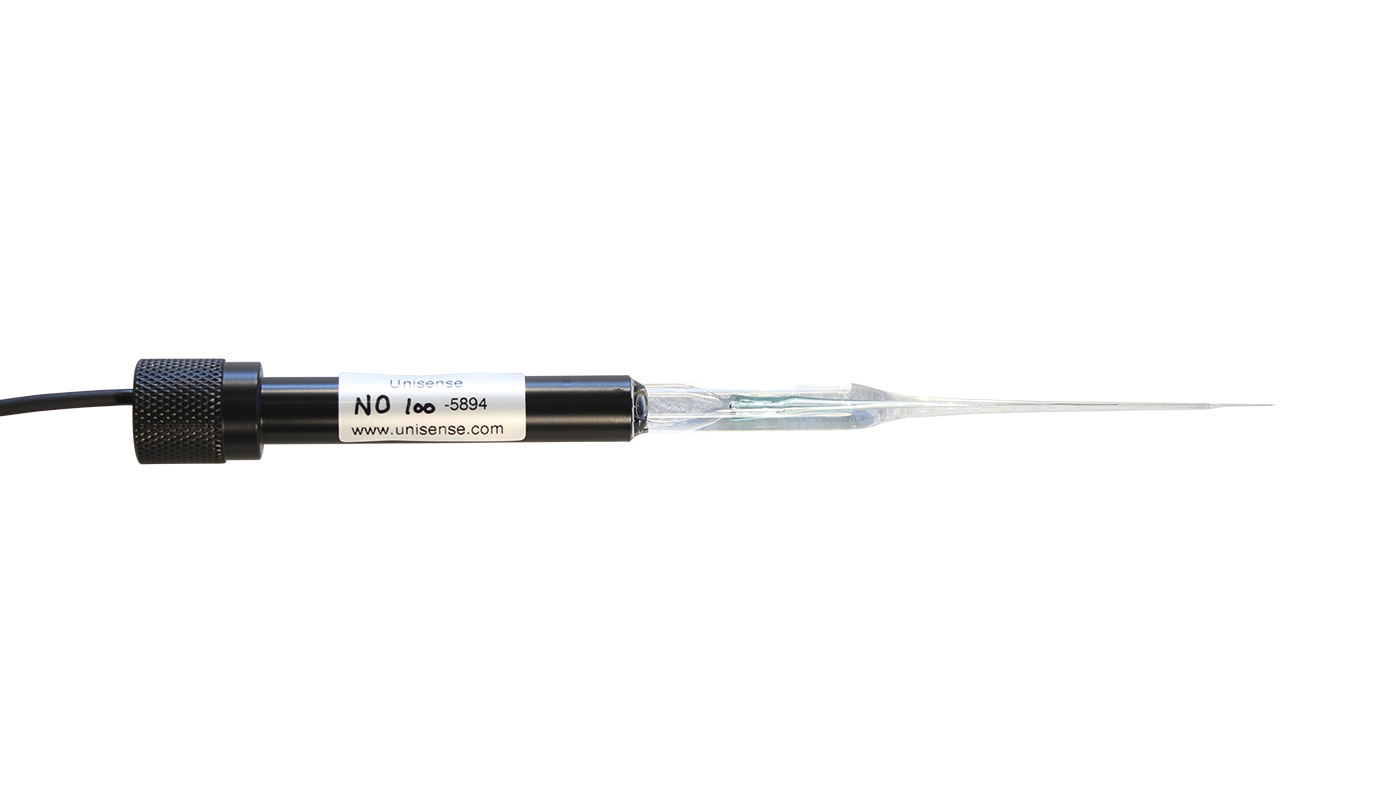
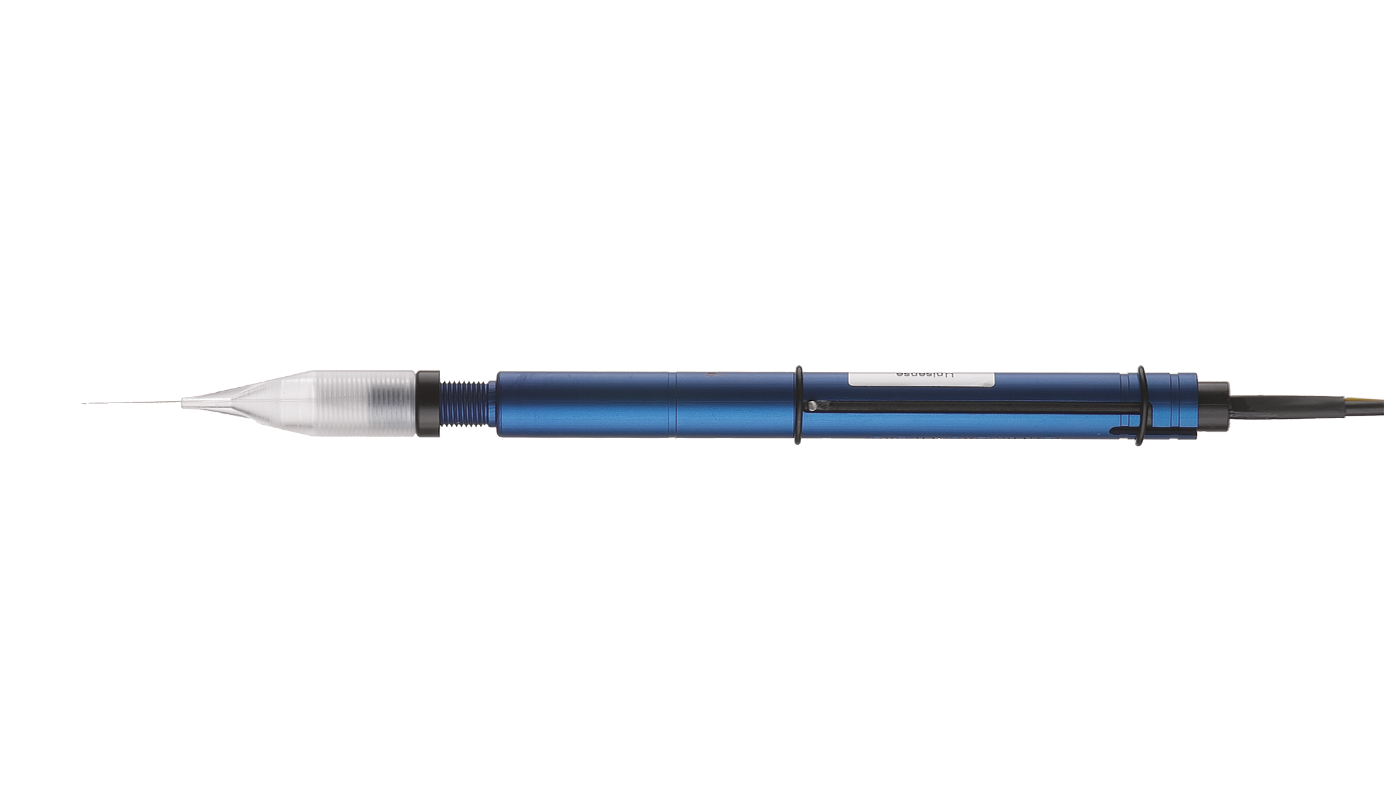
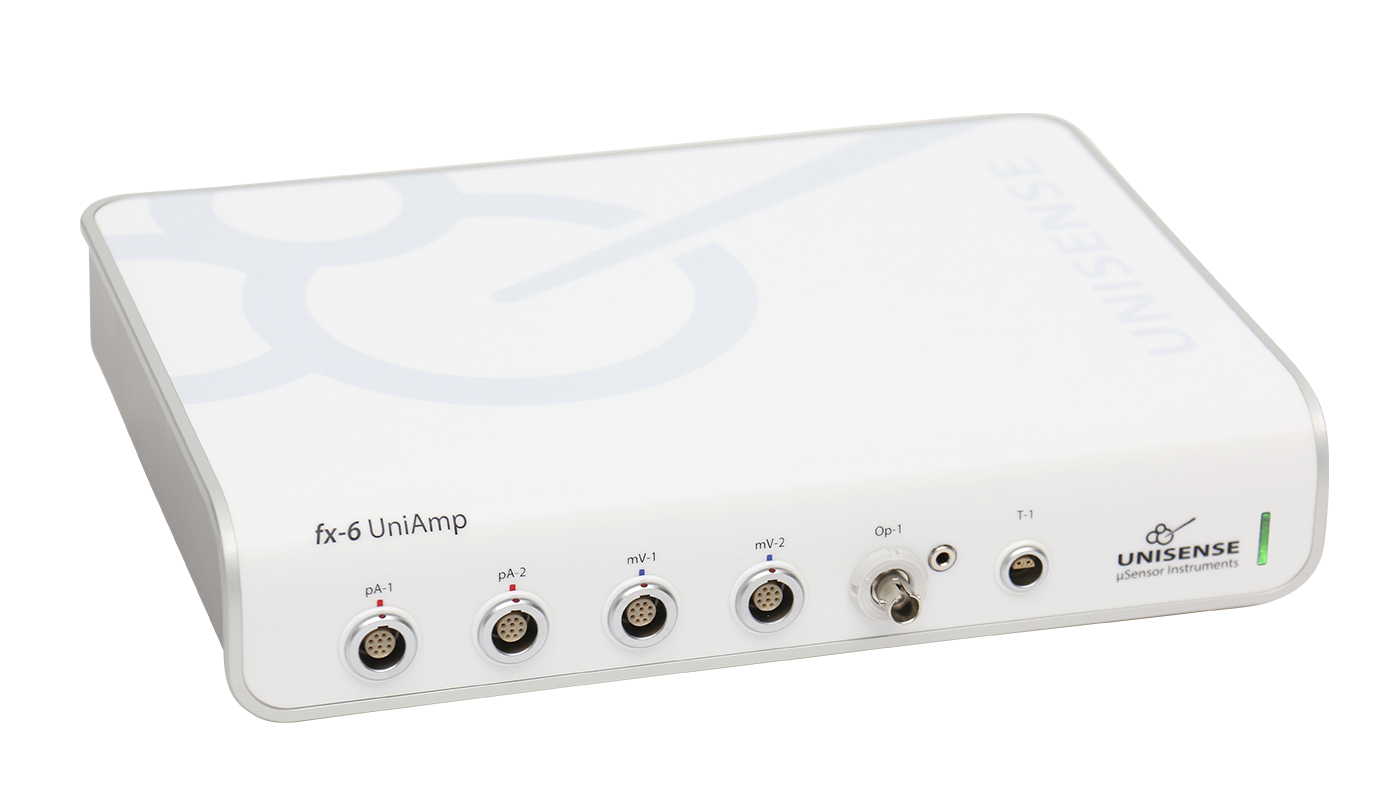
NO Microsensor
The NO microsensor offers you a very high sensitivity, and when you add in the fast response time, you get an excellent research tool to measure minute concentrations of nitric oxide. Read more...
Measure minute concentrations of nitric oxide
Nitric oxide plays an important role in many biological processes. However, natural concentrations are often in the nanomolar range. The Unisense NO microsensor is characterized by a very high sensitivity, which enables you to measure minute concentrations of NO. Combined with a fast response time the Unisense NO microsensor is an excellent research tool for a broad range of tasks.
The sensor can be used equally well for NO measurements in tissue, air, or liquid, and is applied in a broad variety of research fields where non-destructive, fast, and accurate measurements are required.
The NO microsensors are Clark-type sensors measuring the external NO partial pressure. The working principle of the sensor is based on diffusion of NO through a silicone membrane to an NO oxidizing anode, which is polarized against an internal counter cathode. The resulting sensor signal is in the pA range and is measured by a high quality picoammeter, such as the UniAmp Multi Channel.
Compared to other standard NO sensors, the Unisense NO microsensor has an extremely low consumption of max. 935 pmol/hour corresponding to 0.1%/hour in a 1 mL 0.1uM NO sample.
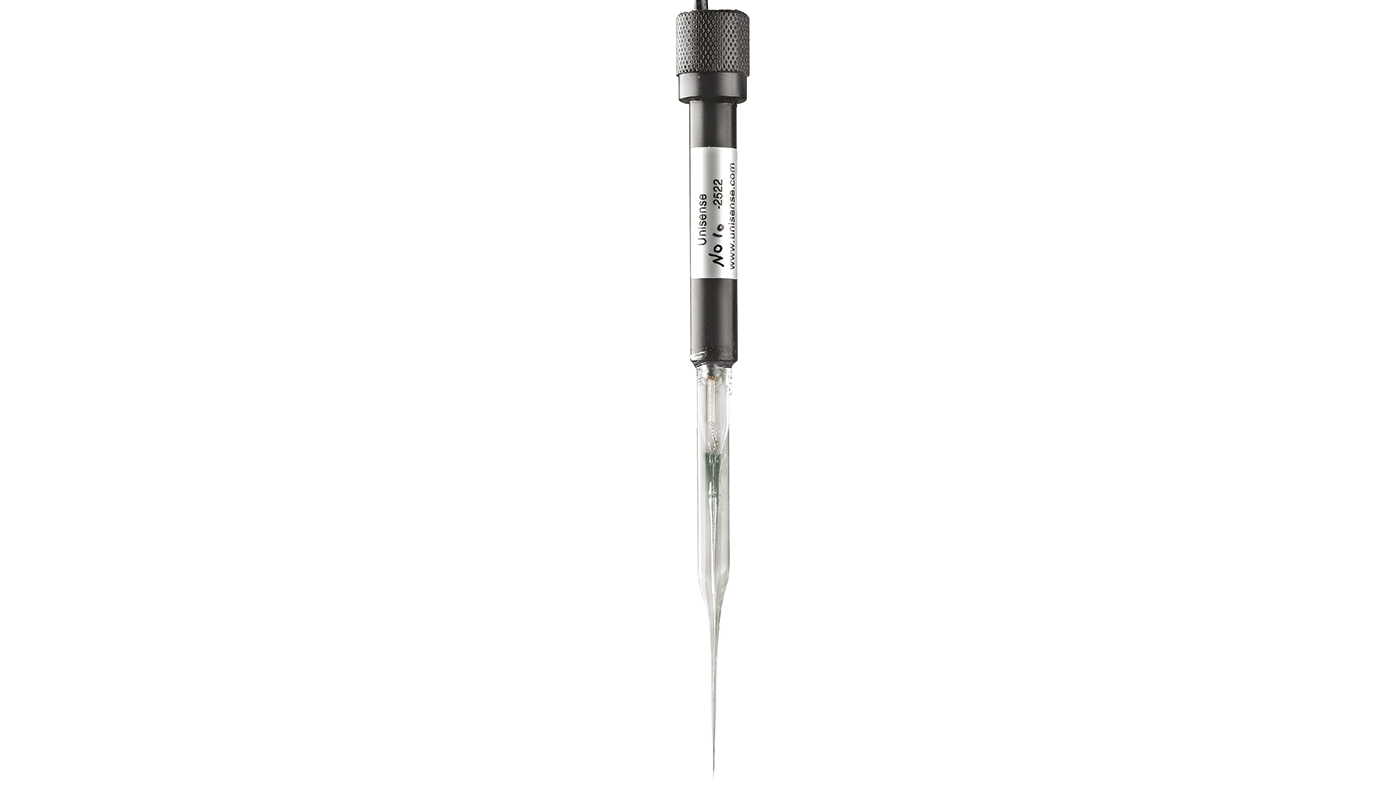
| Attribute | Standard |
|---|---|
|
Attribute
Lifetime
|
Standard
3 months (min)
|
|
Attribute
Linear range
|
Standard
0-3 µM
|
|
Attribute
Detection limit 15 µm tip
|
Standard
20-30 nM
|
|
Attribute
Detection limit 50 µm tip
|
Standard
4-6 nM
|
|
Attribute
Detection limit 100 µm tip
|
Standard
2-3 nM
|
|
Attribute
Detection limit 500 µm tip and FT-cell
|
Standard
2-3 nM
|
|
Attribute
Zero current (approx.) 15 µm tip
|
Standard
2 pA
|
|
Attribute
Zero current (approx.) 50 µm tip
|
Standard
15 pA
|
|
Attribute
Zero current (approx.) 100 µm tip
|
Standard
25 pA
|
|
Attribute
Zero current (approx.) 500 µm tip and FT-cell
|
Standard
30 pA
|
|
Attribute
Reported Interferents
|
Standard
H₂S | NO₂ (gas) | HNO₂ (gas) | Light | TMPD | PMS
|
| Nitric Oxide sensor | Sensitivity (approx.) | Stirring Sensitivity (approx.) | Response Time (90%) (approx.) |
|---|---|---|---|
|
Nitric Oxide sensor
15 µm tip
|
Sensitivity (approx.)
3 pA/µM
|
Stirring Sensitivity (approx.)
10%
|
Response Time (90%) (approx.)
<1 s
|
|
Nitric Oxide sensor
50 µm tip
|
Sensitivity (approx.)
15 pA/µM
|
Stirring Sensitivity (approx.)
20%
|
Response Time (90%) (approx.)
<10 s
|
|
Nitric Oxide sensor
100 µm tip
|
Sensitivity (approx.)
25 pA/µM
|
Stirring Sensitivity (approx.)
25%
|
Response Time (90%) (approx.)
<10 s
|
|
Nitric Oxide sensor
500 µm tip and FT-cell
|
Sensitivity (approx.)
25 pA/µM
|
Stirring Sensitivity (approx.)
25%
|
Response Time (90%) (approx.)
<10 s
|
| Nitric Oxide Sensor | Size and description |
|---|---|
|
Nitric Oxide Sensor
NO-15
|
Size and description
15-20 µm - glass sensor
|
|
Nitric Oxide Sensor
NO-50
|
Size and description
40-60 µm - glass sensor
|
|
Nitric Oxide Sensor
NO-100
|
Size and description
90-110 µm - glass sensor
|
|
Nitric Oxide Sensor
NO-500
|
Size and description
400-600 µm - glass sensor
|
|
Nitric Oxide Sensor
NO-MR
|
Size and description
400-600 µm - in guide
|
|
Nitric Oxide Sensor
NO-NP
|
Size and description
1.6 x 40 mm - needle sensor for piercing
|
|
Nitric Oxide Sensor
NO-ST-1/4
|
Size and description
1/4'' steel tube
|
|
Nitric Oxide Sensor
NO-SL-1/4
|
Size and description
FT-cell 1/4'' Swagelok Tee
|
|
Nitric Oxide Sensor
NO-SL-1/8
|
Size and description
FT-cell 1/8'' Swagelok Tee
|
|
Nitric Oxide Sensor
NO-PEEK-1/8
|
Size and description
FT-cell 1/8'' PEEK Tee
|
|
Nitric Oxide Sensor
NO-PEEK-1/16
|
Size and description
FT-cell 1/16'' PEEK Tee
|
|
Nitric Oxide Sensor
NO-FT-GLASS-6
|
Size and description
Glass FT-cell 6 mm outer diameter
|
|
Nitric Oxide Sensor
NO-FT-GLASS-8
|
Size and description
Glass FT-cell 8 mm outer diameter
|
Video Guides

Watch this quick guide to learn about the sensor's most important measuring characteristics, specifications, and customizations
Quick Enquiry
Related products

UniAmp Multi Channel for all Unisense sensors and electrodes including optical sensors
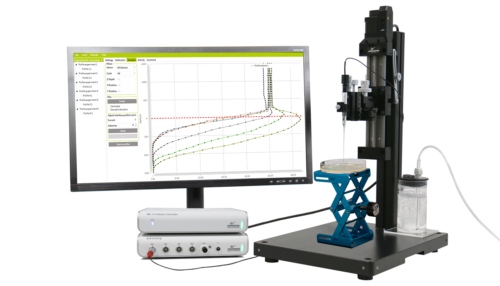
Microprofiles with extreme accuracy, high spatial and temporal resolution
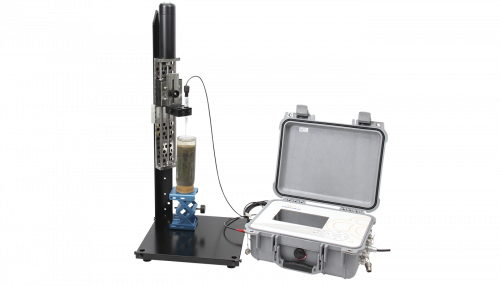
Water resistant Field MicroProfiling System to generate, study, and analyze microprofiles
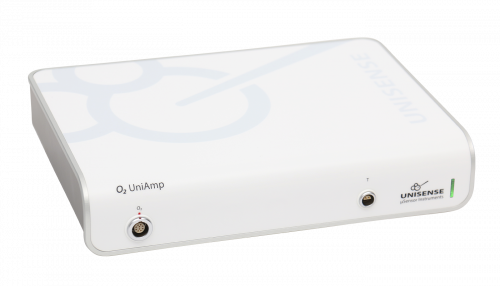
Economic amplifier portfolio for single analytes - O2, pH/mV, H2, N2O or H2S
